Are you in search of the coolest national parks in Georgia? You’re in luck! We’ve got the most comprehensive guide for you right here, and it’s a list worth traveling for.
From sandy beaches to historic Civil War battlegrounds, these are the absolute best national parks in Georgia. Whether your interests lie in enjoying wildlife wonders, or learning about the most prolific Georgians in the state’s history, each site on this list has something to offer travelers of all ages. That’s right! Each Georgia national park welcomes children as well as adult travelers. If you’ve got small sidekicks in tow, you’ll want to take notes – these exciting national parks in Georgia are not to be missed!
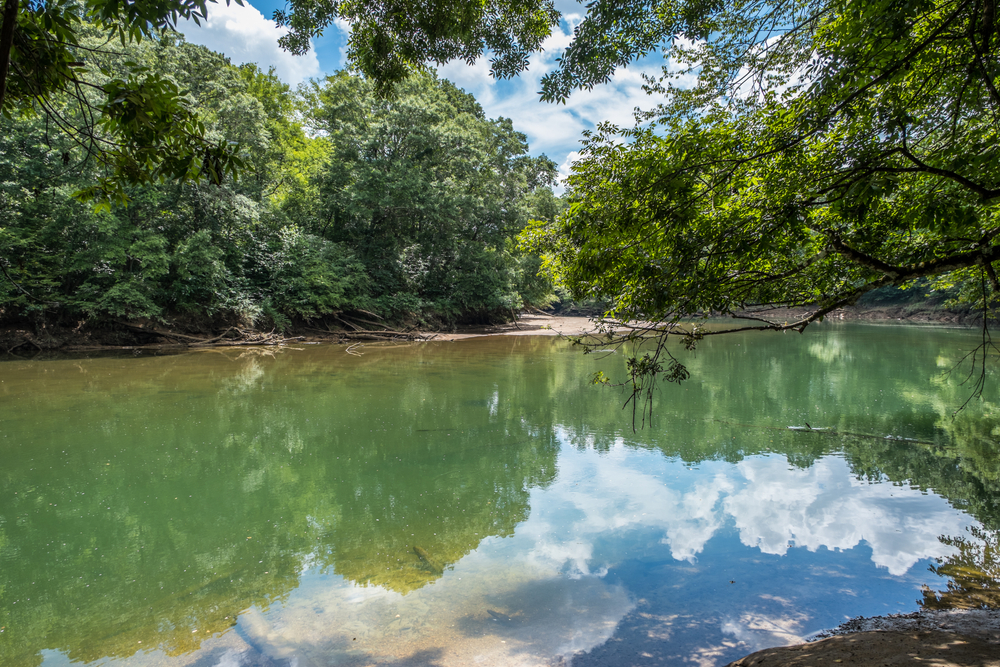
12 Coolest National Parks in Georgia You Must Visit
Andersonville
Located near Andersonville, this national park in Georgia features the preservation of one of the largest Confederate prisons used during the Civil War. Also included on-site are the Andersonville National Cemetery and the National Prisoner of War Museum.
The prison was only in operation for 14 months, but in that time 45,000 Union soldiers passed through its walls. Andersonville was designed to hold up to 10,000 prisoners, but at its fullest, it held 32,000 men at one time. Sadly, 13,000 of those men died there, many due to unsanitary living conditions. A variety of guided tours are available to engage you in the history of the site, and the role Andersonville played in the American Civil War.
Andersonville also welcomes visitors of all ages. Special activities exist to welcome children and teens into the history of Andersonville on an age-appropriate level.

Appalachian Trail
Looking to check out the beginning (or end) of the most well-known hiking path in the United States? If so, then Georgia is the place to be!
Designated as one of the national parks in Georgia, this scenic, wooded footpath stretches across 14 states in the eastern U.S. It all starts (or ends) on Georgia’s Springer Mountain, a must-visit for nature and wildlife enthusiasts, located in the Chattahoochee National Forest. Experienced hikers can enjoy 76 miles of the Appalachian Trail that runs through a variety of ecosystems in the state. For campers, shelters are in place along the trail to assist in an overnight stay, and pets are welcome.
For families looking for a lighter day exploring the trail, Preacher’s Rock is a great option. This 3-mile path will allow children or non-hikers to scramble over rocks and experience the magnificent mountain views without too much effort.
A visit to this National Park in Georgia is also a great way to explore the nearby mountain towns of Dahlonega and Dawsonville, where there are plenty of places to stay, restaurants to enjoy, and activities to discover. Make sure to check out some of the Best Things To Do In Dahlonega!
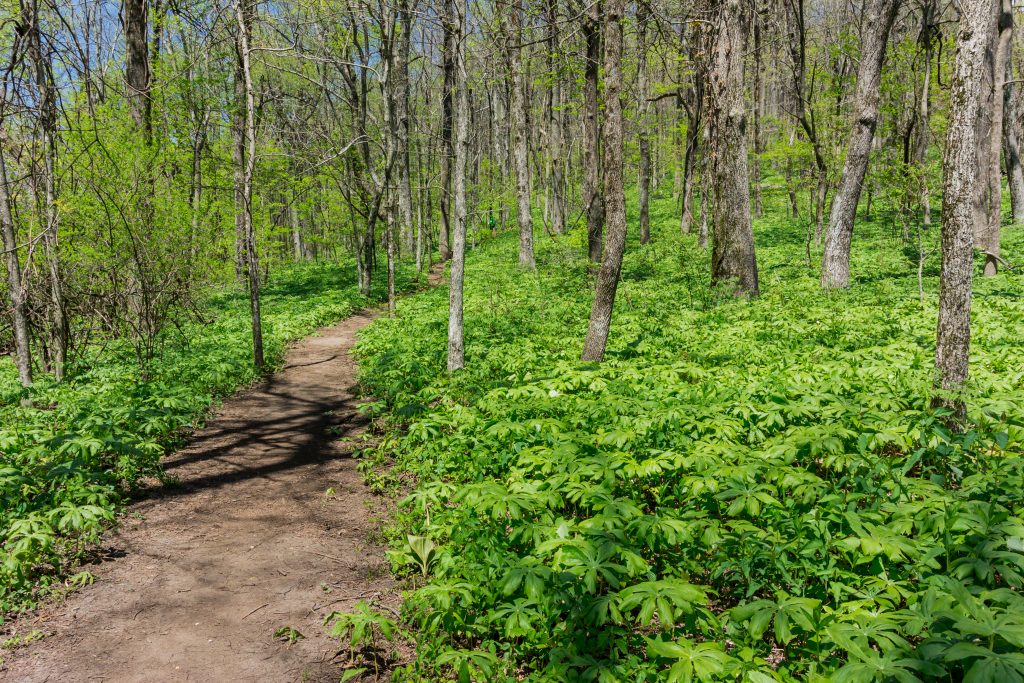
Chattahoochee River
Spanning the length of the western border of the state, the Chattahoochee River is one of Georgia’s most treasured natural landmarks.
This national park near Atlanta hosts some of the most outstanding outdoor adventures around. Fish for trout as the sun comes up on the water, take a leisurely stroll with loved ones, or try to spot bald eagles along the river’s edge. For cyclists, plenty of biking trails are available to enjoy the beautiful riverfront in the Cochran Shoals area of the park.
Looking to get off of dry land for the afternoon? Canoes, kayaks and tubes are available for rental in certain locations within the Georgia national park. Simply float down the river on a sunny day, or put your fishing skills to use as you navigate different areas of the Chattahoochee.
Just like the song says, life really is wonderful “way down yonder on the Chattahoochee!”
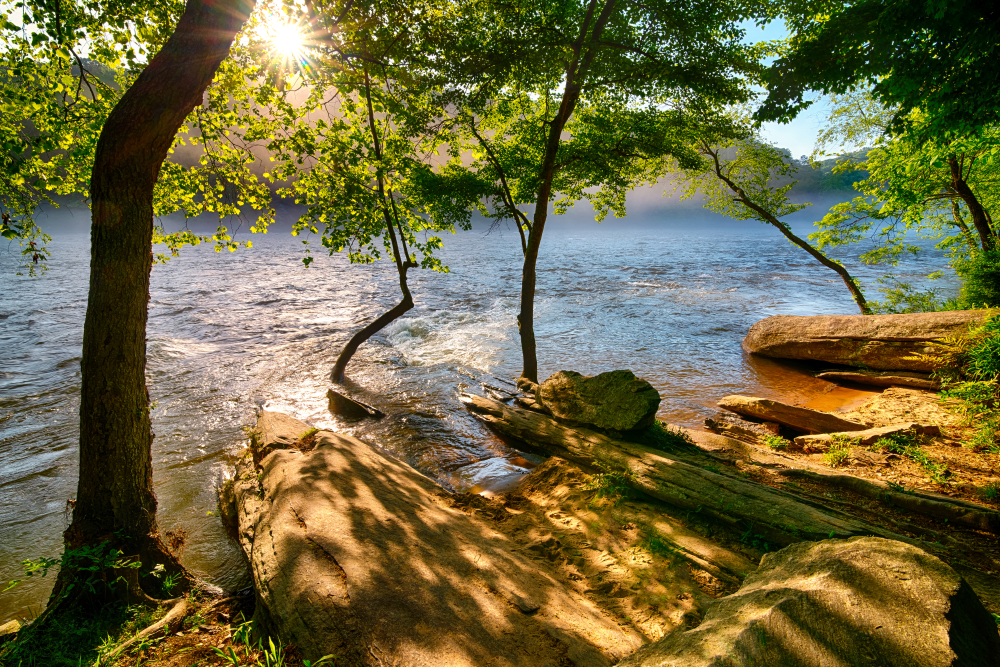
Chickamauga & Chattanooga
Shared with Tennessee, this Georgia National Park commemorates a site where Union and Confederate soldiers fought for control of Chattanooga during the Civil War. At the time, it was known as “the Gateway to the Deep South,” and played an important role in the ultimate Union victory that ended the war.
Chickamauga is located in the Georgia section of the park, and features 50 miles of hiking trails that span the old battlefield. Walking this location provides a rare opportunity to delight in the area’s natural surroundings and also reflect on our nation’s history at the same time. Many of the paths featured along these trails were used by Civil War soldiers on their way to battle – you will truly walk in the footsteps of history in this national park in Georgia.
For an indoor visit, check out the Chickamauga Battlefield Visitor Center. Through photographs, museum exhibits, and film learn about the Confederate and Union struggle for power on the Chickamauga site.
Likewise, on the Tennessee side, the Lookout Mountain Battlefield Visitor Center provides an eyewitness perspective into the fight in the painting The Battle Above the Clouds by James Walker.
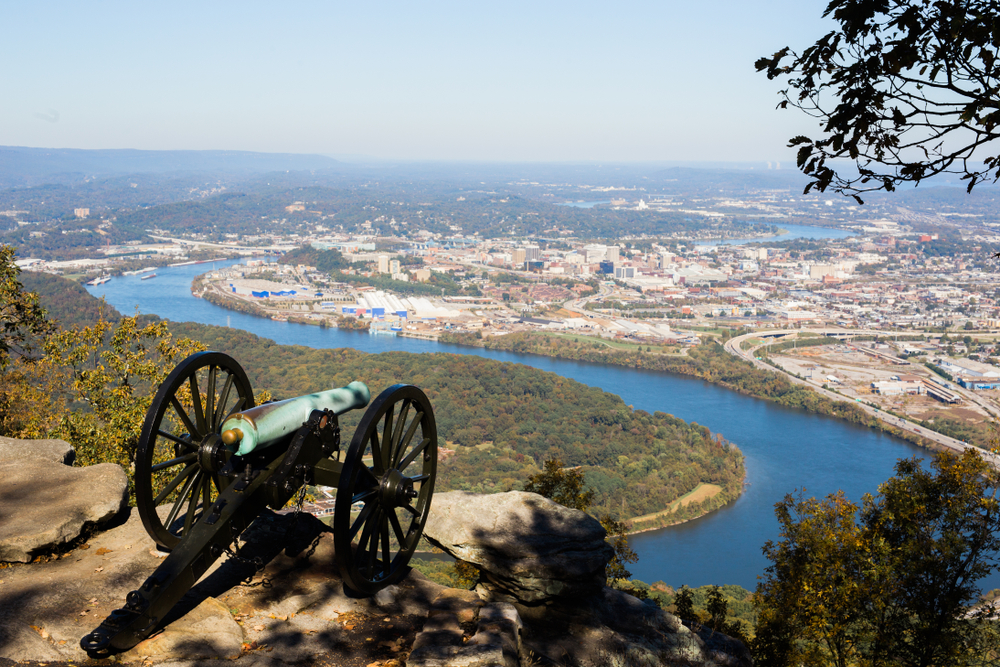
Cumberland Island
To truly appreciate Georgia’s undeveloped, natural seashore, a visit to Cumberland Island is a must-do. With nearly 10,000 acres of Congessionally designated wilderness, this national park in Georgia allows travelers to relish the untouched coastline of the state’s largest barrier island.
Because the main feature of the island is its truly natural landscape, get ready for a day outdoors. Biking trails are one of the best ways to view the island’s forests, marshes, and beaches. Bicycles are available for rent on the island, but there are no paved roads on Cumberland Island, so cycling may be at a slower pace – more time to take in the stunning wildlife!
Camping and guided tours are also prominent activities on Cumberland Island, but you won’t find much else. Make sure to bring snacks and water with you on your trip.
The highlight of a visit to Cumberland Island is the wild horses that roam the seashore. Since the 1500s, horses were brought to the island as livestock, and by the Carnegie family in the 1880s for recreational activities. Once the Georgia National Park was established in 1972, horses were wild across the island. Alligators, sea turtles, and armadillos also call Cumberland Island home, so keep your eyes open to view wildlife in their natural habitat.
Only accessible by ferry, it is important to plan ahead if you want to visit Cumberland Island. The ferry departs from the mainland town of Saint Marys. Be sure to check the schedule for times and reservations.
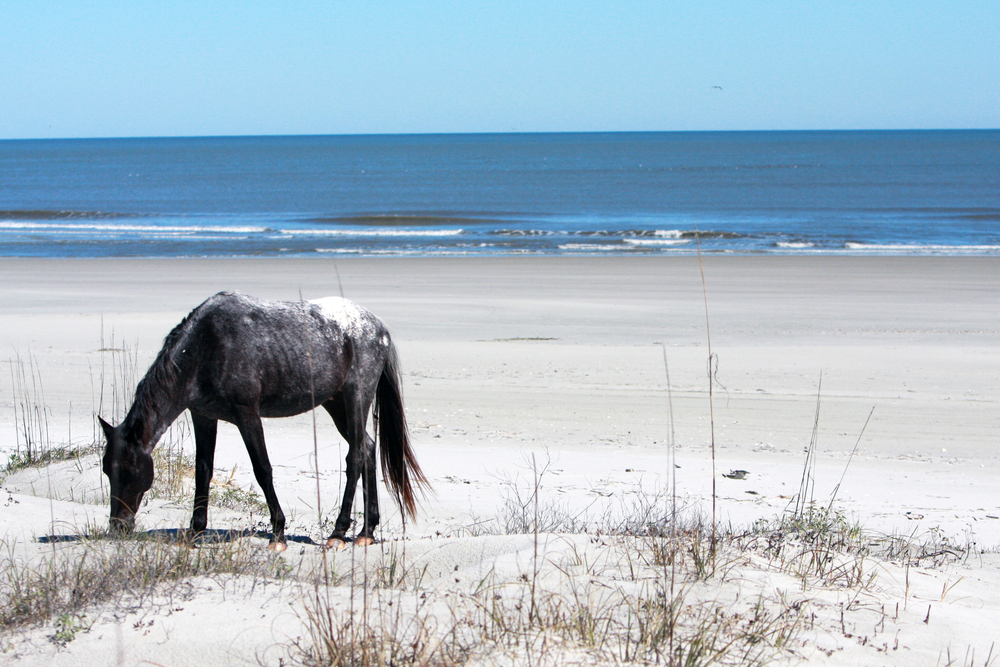
Fort Frederica
In 1736, not long after Georgia’s founding, Fort Frederica was constructed near present-day Saint Simons Island to defend the colony from Spanish attacks from nearby Florida. The battle commenced in 1742, with a British victory over the Spanish, thus maintaining control over the Georgia colony. And the rest, as they say, is history…
Today, visitors can step back into history at this national park in Georgia to learn about the state’s early founding, and explore what life was like for settlers along the Georgia coast.
Biking and hiking are popular activities in the area. Fort Frederica is accessible from Saint Simons through both modes of transportation. Archeology is another important gateway into the history of Fort Frederica. Since 1993, the site has been used as a place to educate visitors about the science of archeology. Camps are now offered for children interested in learning more about Fort Frederica and excavating artifacts from below ground.
Guided tours are also available to fully immerse guests in the history of the fort and the surrounding area.
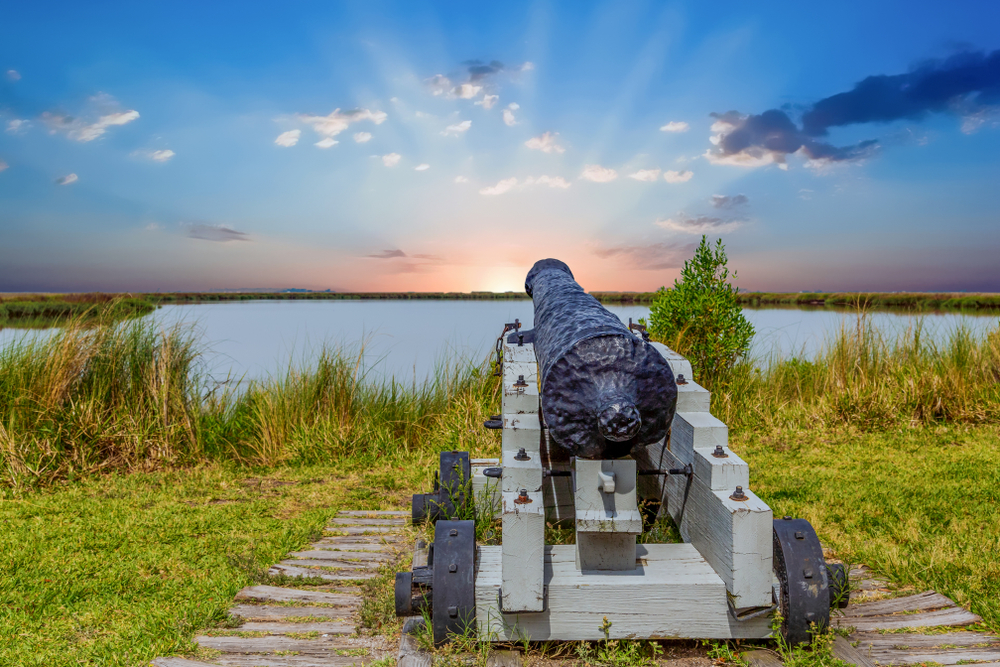
Fort Pulaski
Fort Pulaski, at the time of its building in 1829, was a state of the art military fortification built to protect the coastal city of Savannah. Today, it is a popular national park in Georgia, allowing visitors to witness the evolution of military architecture and technology through the 1820’s to the end of the Civil War.
This fort saw much action during the Civil War, and its use changed multiple times in that era. It was initially used as fortification and was the site of a 50 day siege, but was later used as a home for both Union and Confederate soldiers, and served as a safe place for formerly enslaved people.
In addition to exploring the history of this incredible fort, the area abounds with lots of things to do and see. Hiking, biking, and bird watching are all favored activities on a visit to Fort Pulaski. For hikers, a visit to the North Pier Trail will take you along a serene wooded habitat, while also passing through remnants of Fort Pulaski’s original village.
Lighthouse Overlook Trail provides guests with views of the Savannah River, nearby Tybee Island, and the Cockspur Island Lighthouse. Cyclists enjoy riding along McQueens Island Rails to Trails which links Savannah straight to the beaches of Tybee Island. Fishing is also a popular pastime when visiting the banks of the Savannah River.

Jimmy Carter National Historical Park
Explore the birthplace of the only U.S. President to call Georgia home – Jimmy Carter. Located in Plains, the Jimmy Carter National Historical Park encompasses many locations throughout the area that served as important places in Carter’s young life. It makes our list of the best National Parks In The South!
Start your visit at Plains High School, where Jimmy and his wife, Roslyn, graduated in the early 1940’s. The school is now the park Museum and Visitor Center. Inside, learn about Carter’s early days in Plains, and view restored rooms in the school to get a glimpse of education at the time when the Carter’s attended.
Next, stop over at Jimmy Carter’s Boyhood Farm, where corn, cotton, sugar cane, and peanuts were the Carter family’s prominent crops. The Plains Depot, the oldest building in the area, is the next stop. The Depot served as Jimmy Carter’s presidential headquarters in 1976. When Carter won the presidency, the Depot was the central location for the celebration.
Finally, the Plains Historic District is the ideal place to learn about the area that the Carter’s still call home, and do a bit of shopping and dining in this peaceful Georgia town. For fans of presidential history, this state park in Georgia is a remarkable look into the life of Jimmy Carter.

Kennesaw Mountain
Kennesaw Mountain is the site of a Civil War battleground during the Atlanta Campaign. Union and Confederate soldiers fought here during the long summer of 1864. This national park near Atlanta serves as an important historical reminder of Georgia’s past, while also boasting outstanding environmental surroundings to be enjoyed by all.
When tourists visit Kennesaw Mountain, they gain access to the preserved battleground through hiking and horseback riding trails on a self-guided tour. Make sure you pick up a trail map on arrival for directions and lots of information about the battleground itself.
Looking to “learn while you burn?” The Kennesaw Mountain Calorie Counter is available to visitors who want to track their health and exercise progress while they explore the site. Educational activities are also included in this special perk for mountain hikers.
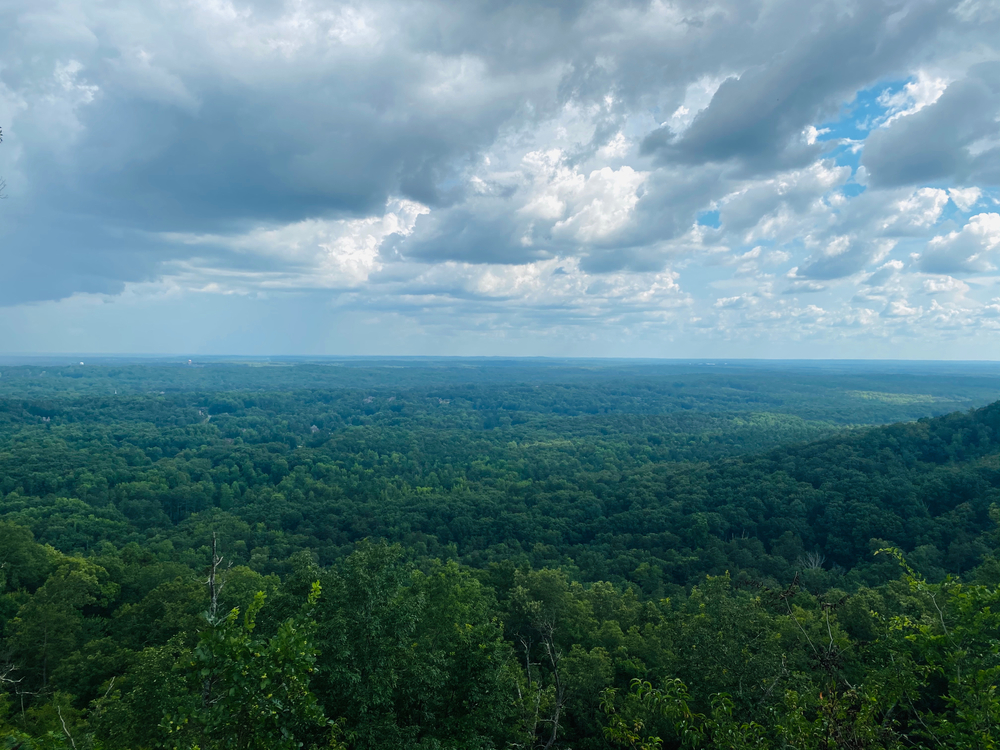
Martin Luther King, Jr. National Historical Park
Celebrating one of the most important Georgians in the history of the state, Martin Luther King, Jr. National Historical Park takes visitors on a journey into the life of this great activist and leader. When visiting this national park near Atlanta gain insight into King’s early life which encouraged and empowered him to be an instrument for social change.
With many locations in the park central to King’s life and the Civil Rights Movement of the 1960s, it’s best to start at the Visitor Center for all the background information needed to get the most out of your visit. Make sure to tour the many exhibits located in the center that provides context for King’s life and the lives of many others during his campaign for social justice.
The Birth Home of Martin Luther King, Jr. is also not to be missed. The restored home is a museum for the King family and allows visitors to experience what King’s early home life might have been like. Other important places in the park include Ebeneezer Baptist Church, where King was baptized as a child and ordained a minister in early adulthood, The King Center, established by King’s wife, Coretta Scott King, to preserve her husband’s legacy, and the World Peace Rose Garden, which serves as the final resting place for Martin Luther King, Jr. and Coretta Scott King.
This national park in Georgia is an outstanding place to celebrate the life and achievements of a great Georgian, and is an essential stop on a visit to Atlanta.
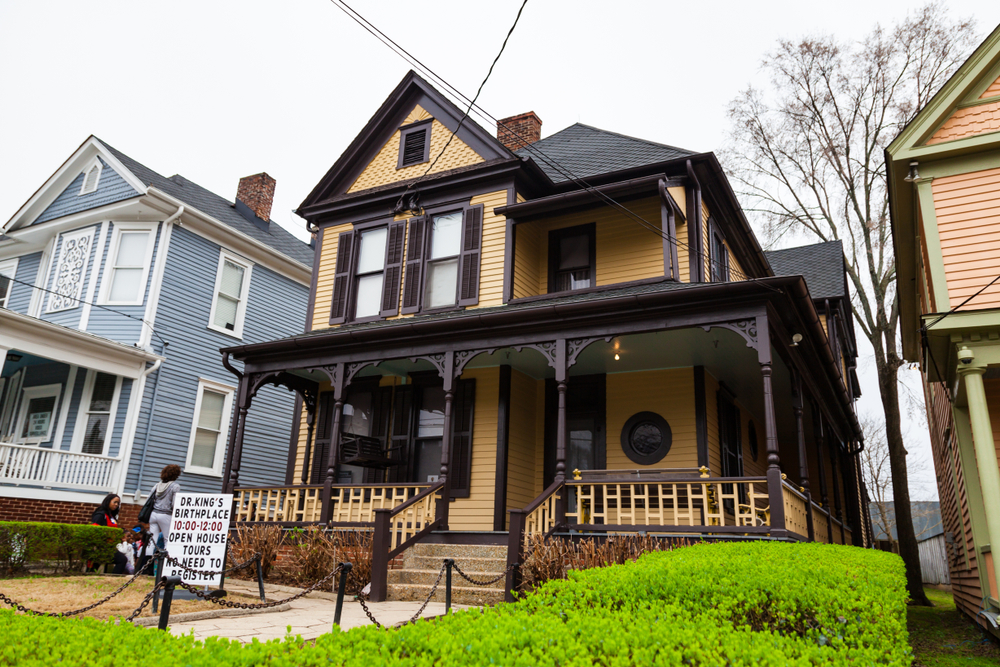
Ocmulgee Mounds
Located near Macon, this Georgia national park allows visitors to explore preserved land occupied by the area’s native Ocmulgee peoples. Sites dating back to 900 CE are on view to expand each visitor’s views on what life was like in prehistoric Georgia.
The Ocmulgee mounds are various ceremonial and burial mounds that were central to the culture of the native peoples that lived on the Macon Plateau thousands of years ago. The prominent Earth Lodge is a reconstructed council chamber, and its clay floor is the original, dating back 1,000 years. Also featured in the park is the Great Mound Complex, where tribal leaders would have lived during the Mississippian Period.
Inside the park, hike the 8 miles of trails weaving around the Ocmulgee mounds, and taking guests through the beautiful surrounding nature. Don’t stop there, though! Make sure you venture to the park’s Visitor Center where, through film, exhibits, and ancient artifacts, tourists gain insight into the lives of the native peoples who called this place home.
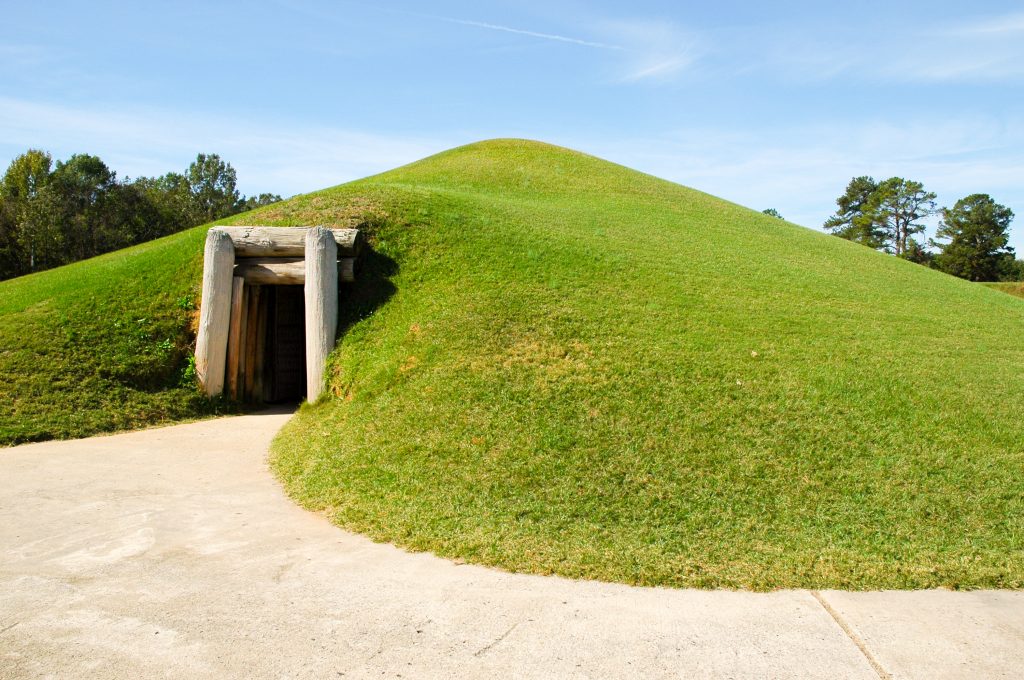
Trail of Tears
The Trail of Tears commemorates the survival of the Cherokee people, who were forcibly removed from their lands in multiple Southern states, and marched westward to reservations in Oklahoma. This historic national park in Georgia also spans multiple states with much to see and learn about this tragic event in our nation’s history.
When visiting the Trail of Tears in north Georgia, make sure to visit Cedartown Cherokee Removal Camp, now called Big Spring Park. More than 200 Cherokee people once lived here before their removal in 1838. Take a driving tour of the park from your car, where you can see the original trail as well as the lovely wildlife that surrounds the area.
Travel on to Rome to view The Chieftains Museum Major Ridge Home, which preserves the legacy of Major Ridge, a prominent Cherokee leader. Explore the restored home and museum, complete with interactive exhibits and educational programs to help visitors understand and appreciate the Cherokee culture.
Finally, make a stop at the John Ross House in Rossville. Ross became the chief of the Cherokee in 1828, and he served as a leader in the resistance to the removal of his people from their lands. Sadly, Ross eventually lost his claim to his own land and was unsuccessful in his campaign to help his people regain their place in their homeland.
With many other stops along the way, this national historic trail would make a perfect weekend road-trip dive into history.
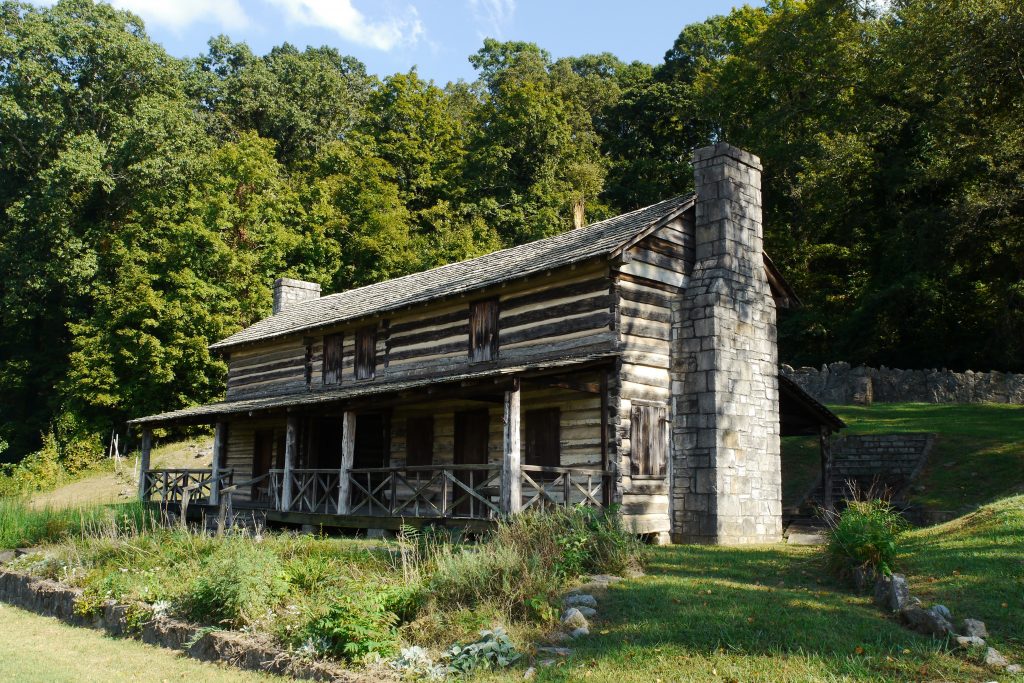
From many sites offering tourists a step back in time to Georgia’s rich and varied history to lovely landscapes celebrating the state’s natural beauty, these national parks in Georgia have so much to offer every visitor. All ages can enjoy each park and come away with a greater understanding and appreciation for how this state came to be what she is today. Not to mention, a day of fun!
Grab your people, pick a destination, and come explore the coolest Georgia national parks!

 16 Interesting Day Trips From Atlanta For Your Bucket List
16 Interesting Day Trips From Atlanta For Your Bucket List